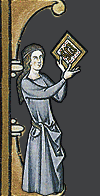
|
Calligraphy and Illumination
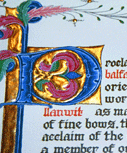 Calligraphy
Calligraphy
During the middle ages scribes tended to be monks working to make
copies of religious books. Some scribes were hired artists that
had wealthy patrons who wanted their own personalized copies of
the great works. Illumination was mostly used for decorating the
pages of books and often described the text in stylized pictures.
One of the most commonly illuminated books was the Book of Hours,
which was a collection of the text for each liturgical hour of the
day and often included calendars, prayers, psalms and masses. There
are many great extant examples of these for modern scribes to study.
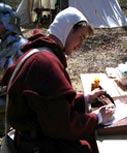 What
do SCA scribes do? SCA scribes study period manuscripts and produce
documents which accompany awards that are presented in court. What
do SCA scribes do? SCA scribes study period manuscripts and produce
documents which accompany awards that are presented in court.
There are many different styles of calligraphy and illumination.
These scribal forms have evolved over the centuries and were adapted
and altered to suit the needs of each culture it moved through.
Islamic illumination excelled at intricate vine-like designs, and
in many Christian texts, saints were represented in a very stylized
manner to better show their holy presence.
Scribal Calligraphy - putting words on paper (or
vellum, parchment, papyrus, etc...). This is usually done with calligraphy
nibs and ink and sometimes with brushes depending the style.
Illumination - decorating the page. This is commonly
done with gouache (opaque watercolor). Some period pigments however
can be toxic and those must be used with caution. Acrylics and oils
are not used due to their modern materials. Gold leaf is used with
medieval adhesion recipes (gesso, fish glue, Armenian bole, etc).
Wordsmiths - coming up with flowery wording for
scrolls. This is where someone with a poetic bent can get involved.
Note: We call them "scrolls," but they're really
documents, as the term documents often refers to the more legal
and official paperwork that we're sometimes forced to endure. Actual
scrolls are wound on sticks.








|
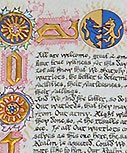
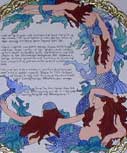
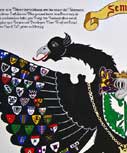
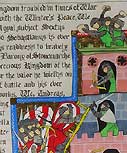
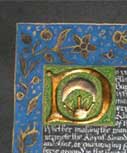
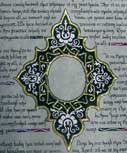
|






